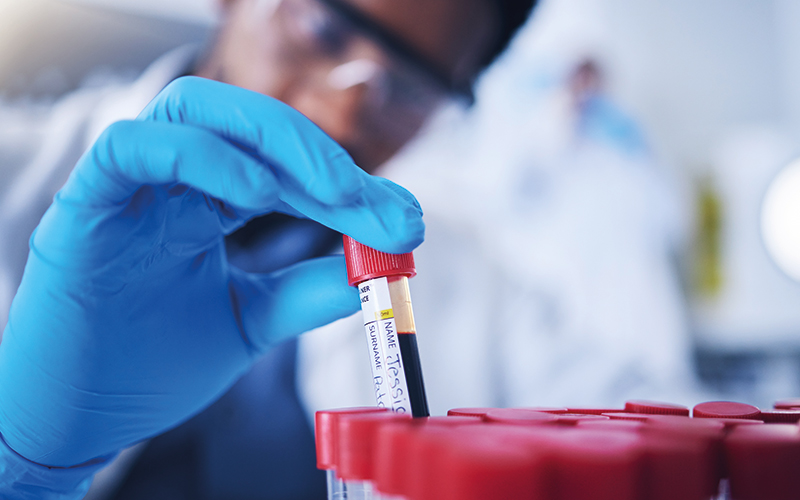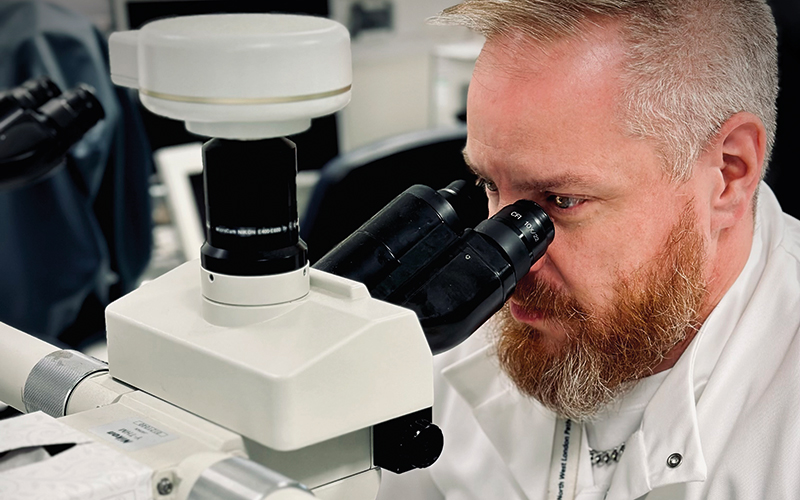Specialist Biomedical Scientist Kunalini Shanmuganathan gives a nuts-and-bolts guide to working in blood sciences for those looking to enter the profession.

Biomedical scientists play a vital role in the healthcare profession, performing research, investigations and analysis and guiding clinicians with diagnosis and treatment. They are involved in various settings and departments, such as blood sciences, infection sciences, cellular pathology, genetic and molecular pathology. This article takes one example and discusses the vital role of a blood sciences biomedical scientist and their part in aiding other healthcare professionals with the diagnosis.
Biomedical scientists carry out various tasks within the laboratory, including booking patient samples, running tests on analysers, performing maintenance on the instruments and validating results using the laboratory information management system (LIMS). Some biomedical scientists also have direct involvement with patients and practise autonomously in providing complex diagnoses.
The phases
The process from collecting the specimen to providing a report involves three phases, which are:
- Pre-analytical
- Analytical
- Post-analytical.
The pre-analytical stage is the initial stage in the laboratory process. It is a crucial phase and looks at errors occurring with handling specimens prior to specimen arrival in the laboratory. The common errors are inaccurate labelling of specimen bottles, missing patient identification, phlebotomy errors, incorrect sample bottles, incomplete or total misidentification of the patient, insufficient samples, failure to mix samples appropriately and delay in transport. These errors have a major impact on patient care, including delay in reporting results, unnecessary redraws, delay in diagnosis or misdiagnose and inappropriate treatment and, in some cases, can potentially lead to adverse consequences for patients.
The analytical stage involves the processing of specimens within the laboratory, such as separating samples according to their destination of analysis, booking in request using LIMS, processing on the analyser, results interpreted and verified. Common errors that are associated with this phase are, for instance, inaccurate pipetting, equipment malfunction, improper sample preparation or interference with substance, for example haemolysis or lipids.
The final stage is the post-analytical phase, which involves reviewing, reporting test results, evaluation and interpretation of results by clinicians. Possible causes of post-analytical variables include transcription errors, misinterpretation of patient results or delay in turnaround times. These phases are significant elements of quality management. A small error impacts diagnosis, treatment and service.
Biomedical scientists ensure a high-quality service by maintaining appropriate safety and good laboratory practice by following national guidelines. Handling specimens requires a high level of safety, so all samples are treated with care and respect.
Quality control
Prior to running patient samples, the analysers undergo quality checks that include thorough maintenance, checking supplies and suitability of onboard reagents, performing calibrations and quality control (QC). Each assay has to go through a quality control process that gets assessed using Levy-Jennings graphs, local benchmarks and other statistical packages. Inconsistent quality controls or QC failure occurs if a reagent is running low on board, calibration has failed or expired, a new lot of reagent is loaded that has to be verified or the analyser needs further troubleshooting. On these occasions, biomedical scientists seek advice from senior colleagues in order to rectify challenges efficiently. In the event of downtime, samples may be sent across to a different site to prevent further delays in processing them.
Other delays in turnaround times may be due to microscopic investigation, manual dilution, and/or variation in test results, therefore requiring a repeat blood sample. A delay in sample processing can have a significant impact on the laboratory turnaround time, further affecting the service, wards and delay in the patient being seen with an update on their blood results. Thus, biomedical scientists work at the cutting edge, supporting the overall service.
Expanding role

The role of a biomedical scientist continues to expand with advanced technologies and research to support healthcare professionals with accurate diagnosis and efficient treatment. Blood sciences biomedical staff provide diagnostic decisions without medical input – for instance they initiate blood smears based on abnormal findings from an automated count and clinical details. Microscopic examination of blood smears remains an indispensable technique within the haematology discipline. In some cases, further laboratory investigations such as cytochemistry, flow cytometry or molecular methods become an advantage when investigating malignancies.
Conclusion
The laboratory processes samples at high volume on automated blood sciences analysers, however, beyond each test, there are highly skilled biomedical scientists delivering it all. This includes operating machines, performing maintenance, calibrations, quality controls and troubleshooting in order to safely transmit reliable results to the clinicians. Biomedical scientists have a huge responsibility in processing samples efficiently, validating results accurately, interpreting and integrating complex results from a variety of sources, liaising with medical colleagues and contributing to diagnostic decisions and treatment management and monitoring. The biomedical scientist is the guardian of safe laboratory medicine.
Kunalini Shanmuganathan is a Specialist Biomedical Scientist working in Blood Sciences at St Mary's Hospital and hosted by Imperial College Healthcare NHS Trust, North West London Pathology.
Image credit | Istock
